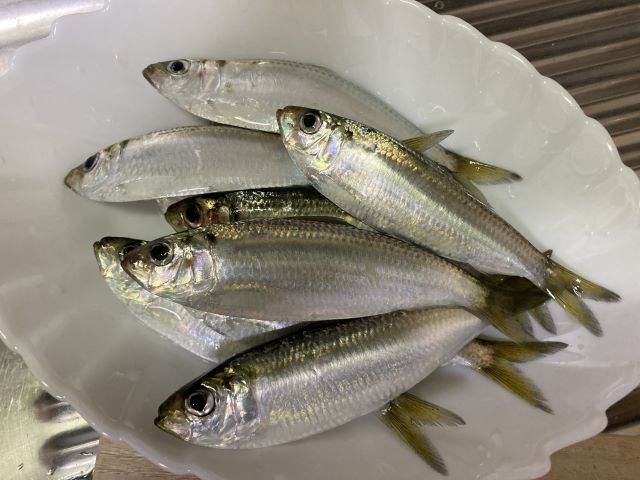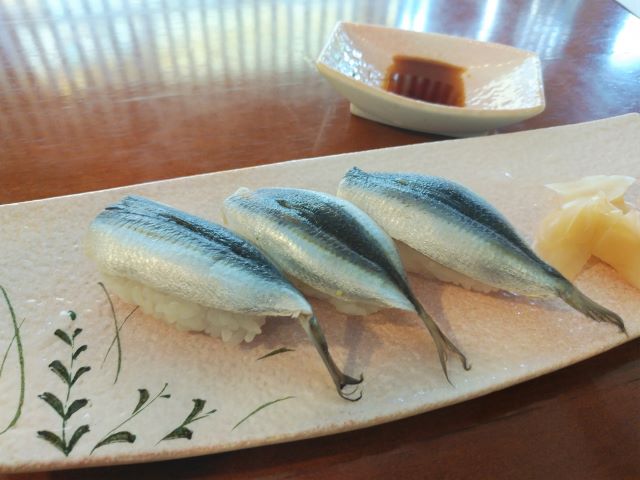
What is Japanese scaled sardine (Mamakari)?
Japanese scaled sardine (Mamakari) is distributed south of Hokkaido, the Yellow Sea, and Taiwan. It inhabits shallow sandy muddy areas near the mouths of estuaries in inner bays. Its standard Japanese name is Sappa, and its length reaches 15 cm. Juvenile fish can be caught in large numbers in small fixed nets, but It has little market value and are treated as small fish.
The morphology and ecology of this species are similar to that of the Gizzard shad (Konoshiro) throughout the egg, juvenile, and young stages, but the adult fish clearly differ in body color and dorsal fin shape. In Japanese scaled sardine, the blue on the dorsal side and the white on the ventral side are clearly separated and vivid. Its scientific name is Sardinella zunasi (Bleeker, 1854).
What does Japanese scaled sardine (Mamakari) sushi taste like?

In Okayama, Japanese scaled sardine, a close relative of gizzard shad, is called Mamakari and is highly prized. It is in season from fall to winter and is the finest Mamakari with fine texture and fat.
Fresh Mamakari nigiri sushi, lightly vinegared, has a unique Okayama flavor that is different from that of Gizzard shad (Kohada). One thing to note is that, as with other herring species, there are many small bones, so it is easier to eat them if they are pickled in vinegar. It can be said that it is a dish that refreshes the palate and whets the appetite.
[sc_apply url=”https://sushiuniversity.jp/apply/”]
We hope this information will be helpful.

Revision date: June 5, 2023
Share this article